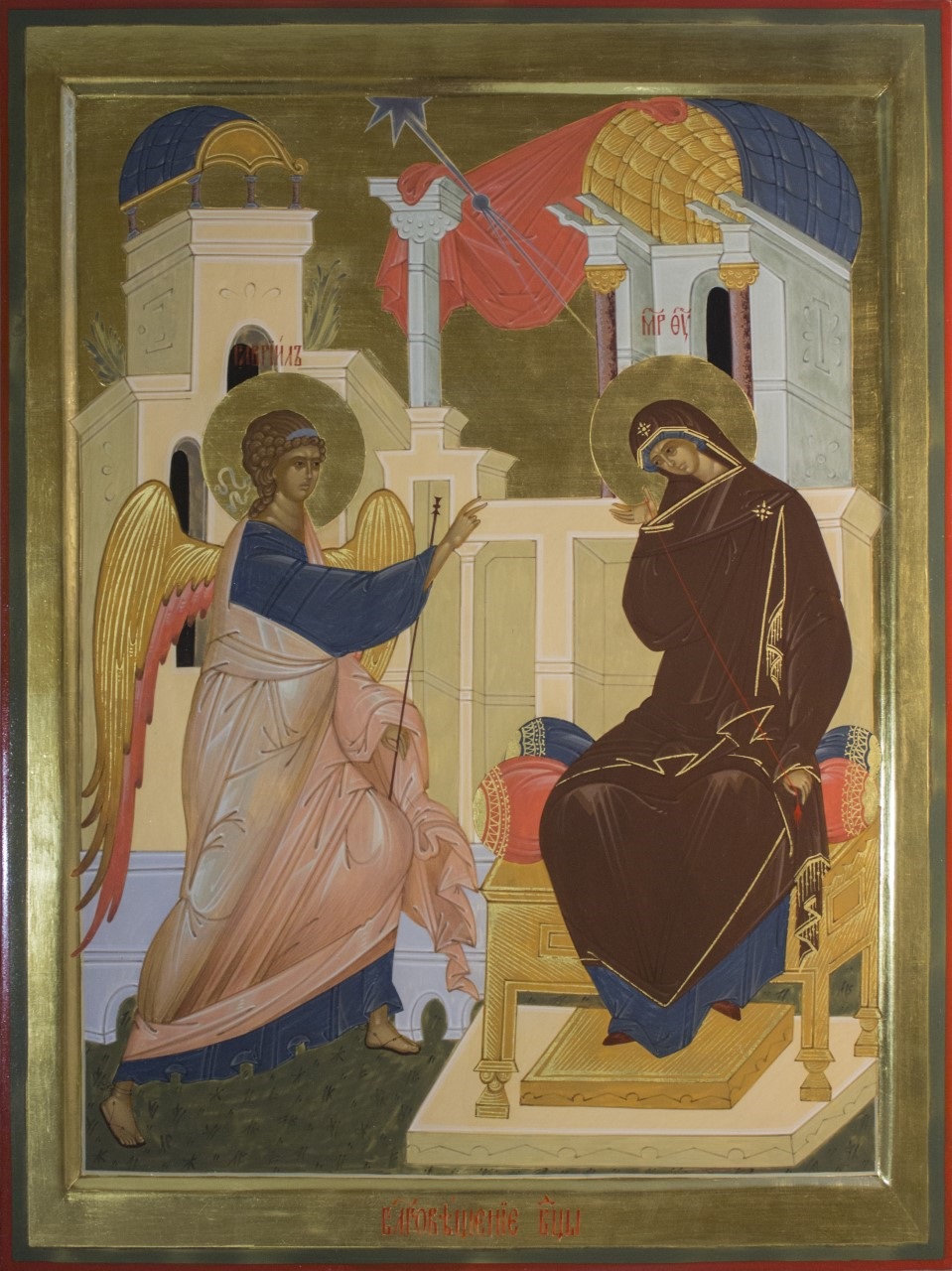“Behold, our restoration hath now been revealed to us! God uniteth Himself to men in manner past recounting! Falsehood is dispelled by the voice of the archangel! For the Virgin receiveth joy, an earthly woman hath become heaven! The world is released from the primal curse! Let creation rejoice and chant aloud: O Lord, our Creator and Deliverer, glory be to Thee!”

Dear brothers and sisters – s prazdnikom!
Greetings as we celebrate the joyful feast of the Annunciation.
How wonderful it is that it is in this springtime of unfurling leaves, spring flowers and blossom ready to burst open the gardens hedgerows, that we celebrate the yearly feast of the Annunciation – that great Springtime in the Divine economy of salvation, in which the long winter of man’s exile and estrangement from God was undone by the Divine condescension and Mary’s ‘fiat’: “Behold the handmaid of the Lord; be it unto me according to Thy word.”
The great hymnographer, St John of Damascus wrote,
“Today, from the cold winter, the warm and flowery spring has shown forth, and the golden sun of rejoicing and happiness has dawned for us.
Today, God-planted Eden is re-opened, and God-fashioned Adam, due to His goodness and love for man, enters again to dwell within.”
This incarnational journey from the spiritual winter of exile to the springtime of salvation echoes the beautiful prophetic words from the Song of Solomon,
“The winter is past; the rains are over and gone. Flowers appear on the earth; the season of singing has come, the cooing of doves is heard in our land. The fig tree forms its early fruit; the blossoming vines spread their fragrance. Arise, come, my darling; my beautiful one, come with me.”
As we anticipate the yearly celebration of Christ’s victorious rising from the dead, let us rejoice in the Annunciation, in which our Triune God addresses these prophetic words of Solomon, “Arise, come, my darling; my beautiful one, come with me…” not only to the Mother of God, but to every soul, created, cherished and loved by Him, as the Divine Bridegroom reaches out to humanity through His coming and dwelling among us – and even as we look forward to Pascha/Easter, we are struck that this word “Arise” calls us not only from spiritual slumber to attention and vigilance, but to be sharers and participators in the joy of the resurrection.
So, let us embrace this spiritual-springtime and the promise contained within it, to bask in that golden sun of rejoicing.
We look beyond the dawn memorialised by this day to its culmination of in the glory of the resurrection of the Saviour, the Risen Sun of Righteousness, remembered in this feast as that tiny physical Presence within the womb of the Mother of God, yet the One Who not only re-opened paradise, but went to search for Adam and Eve in the very depths of Hades. Setting them free by His victory on the Tree of the Cross and His third-day resurrection, He was able to say to each of them – to the Forerunner, and to every righteous soul of the Old Covenant – “Arise, come, my darling; my beautiful one, come with me.”
Let us look to Christ the Bridegroom with longing, who in His great love came in the Annunciation and Incarnation to seek us in our own dwelling-place as the Word who “became flesh and dwelt among us, and we beheld His glory, the glory as of the only begotten of the Father, full of grace and truth.”
May God bless you and may this great feast be filled with rejoicing, and guide and hasten us towards the Lord’s glorious resurrection.
In Christ – Hieromonk Mark

